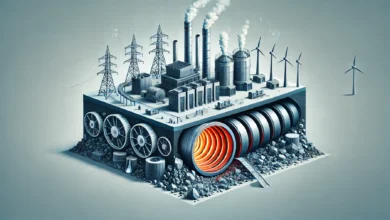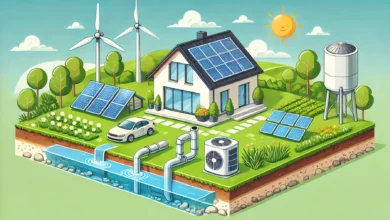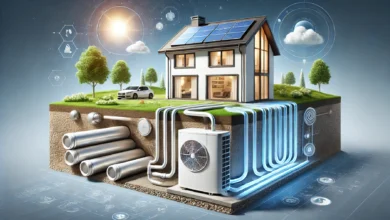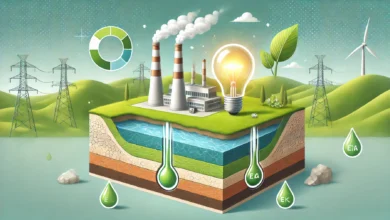Geothermal Energy Pros and Cons
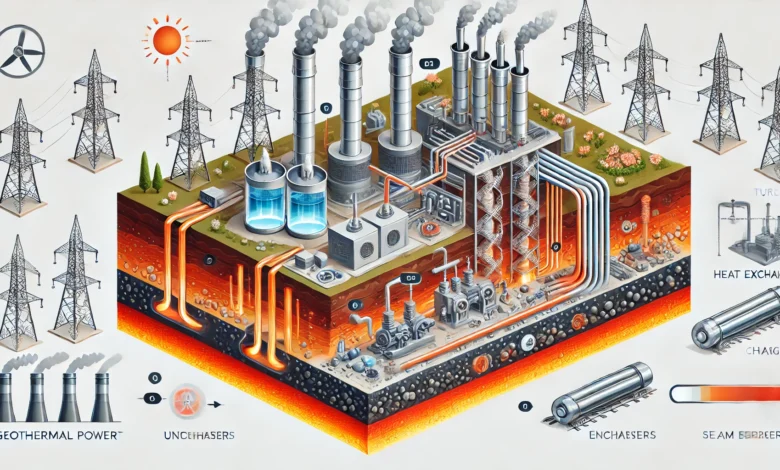
By understanding geothermal energy, we can recognize it as a substantive part of our clean future, while also grasping the limits of its practical use. In this guide, we will explore who uses geothermal energy, how geothermal energy works, the pros and cons of geothermal, and how geothermal compares to other energy sources.
Contents
What Is Geothermal Energy?
Geothermal energy is the heat stored below the Earth’s surface. It is a result of the slow breakdown of radioactive particles produced in the Earth’s core and from the residual heat created when our planet formed. This heat can be used for generating electricity, heating buildings, and supporting industrial processes. The United States, Iceland and the Philippines are among the countries utilizing geothermal energy resources most actively.
How Geothermal Energy Works
Geothermal power plants utilize steam reservoirs or underground water reservoirs by drilling wells into the reservoirs and bringing steam to the surface. The steam spins a turbine, which is connected to a generator that creates electricity. In direct-use applications, geothermal heat powers heating buildings or greenhouses or advancing industrial activities without converting the geothermal energy into electricity.
Geothermal Energy Pros and Cons
| Pros | Cons |
|---|---|
| Renewable and sustainable resource | High upfront costs for installation |
| Low carbon emissions | Site specific source location |
| Reliable base-load energy supply | Risk of induced seismic activity |
| Minimal amount of land compared to solar or wind | Possible emission of underground gases |
Advantages of Geothermal Energy
Renewable & Sustainable
Geothermal energy will be renewable as long as Earth continues to exist because the center of the Earth will heat the geothermal resources. Unlike fossil fuels, which will eventually run out, geothermal energy is always available.
Low Carbon Footprint
Geothermal plants produce 99% less carbon dioxide than coal plants. Overall, geothermal energy provides about 85% of Iceland’s heating needs with nearly zero greenhouse gas emissions.
Reliable Power Output
Geothermal energy supplies power consistently and reliably; unlike solar or wind energy. The baseload production of geothermal energy guarantees its place as a resource.
Small Land Footprint
Geothermal plants have a much smaller footprint than any other renewable technology. Even though they have little true impacts, wind farms or solar systems may require 20 acres or even hundreds.
Disadvantages of Geothermal Energy
High Initial Costs
Drilling into the Earth’s crust to build geothermal plants is an expensive process. Ground source residential systems can range from $10,000 to $30,000 where sometimes incentives and other opportunities make it lower than that.
Site Limitations
Geothermal is very site specific. Not all sites have hot reservoirs where they are available. Countries like New Zealand close to tectonic plate boundaries tend to have more geothermal potential naturally.
Induced Seismicity
In certain cases geothermal drilling has induced small earthquakes. They tend to be minimal, but are a consideration when assessing potential sites for new projects.
Potential for Environmental Issues
In very few cases geothermal plants have released trace amounts of greenhouse gas that has become trapped underground. The environmental impacts of development may also still be limited by new technologies and management.
Comparative Overview of Geothermal Energy Compared to Other Energy Sources
| Energy Source | Carbon Emissions | Land Footprint | Reliability | Environmental Impact |
|---|---|---|---|---|
| Geothermal | Very Low | Very Small | Very Reliable | Minimal |
| Hydropower | Low | Large (Dams) | Very Reliable | Alters ecosystems |
| Coal | Very High | Moderate | Reliable | Severe pollution |
| Solar | None during operation | Large (Panels) | Intermittent | Minimal (panel waste) |
| Wind | None during operation | Large (Turbines) | Intermittent | Minimal |
Understanding geothermal energy’s thermal energy, really is not that difficult. Hydropower is renewable, but it does disrupt ecosystems and fundamentally change land use with dam construction. The land footprint of geothermal compared to hydropower and fossil fuels is tremendously smaller. It is even staggering the comparison against fossil fuels that lay an entire spectrum of pros and cons of coal. Coal-fired plants emit much greater amounts of carbon dioxide and other polluters have significantly more productive potential, geothermal systems have no emissions once the system is operating.
As just an example, a geothermal plant size of 100 megawatts will offset about.
Frequently Asked Questions
Is geothermal energy costly?
Yes, while geothermal systems have a higher capital cost upfront, from a life cycle analysis perspective geothermal has some of the lowest lifecycle costs of energy types, mainly because there is very little or no maintenance costs, and systems operating costs are after upfront installation is included.
Where is geothermal energy being utilized most?
The countries utilizing geothermal resources are primarily Iceland, the United States (California and Nevada), the Philippines, and Kenya.
Can I install a geothermal system into my home?
Yes, geothermal heat pumps (GHPs), as an example of that technology, are becoming more common as residential heating/cooling systems, thus operating costs are very low.
Is geothermal energy causing climate change?
No, geothermal has a very small fossil fuel footprint, whereas it is considered is routinely one of the “cleanest” energy options available today.
How long can geothermal systems last?
A residential geothermal heat pump system should last over 25 years with proper service and maintenance; underground piping systems will last normally over 50 years easily.
Understanding the advantages and disadvantages of geothermal energy can help us make informed decisions as we look to arrive at a sustainable future. Geothermal technology is restricted, but it is renewable, provides electricity continuously (reliably), and has substantially less land impact in comparing geothermal to other energy options available today, thus indicating geothermal energy is an energy option that energy systems scientists and policy makers are looking for in the future. As technology improves and costs decline, geothermal energy may become a more prominent option in reducing our reliance on fossil fuels, and in fighting climate change.
